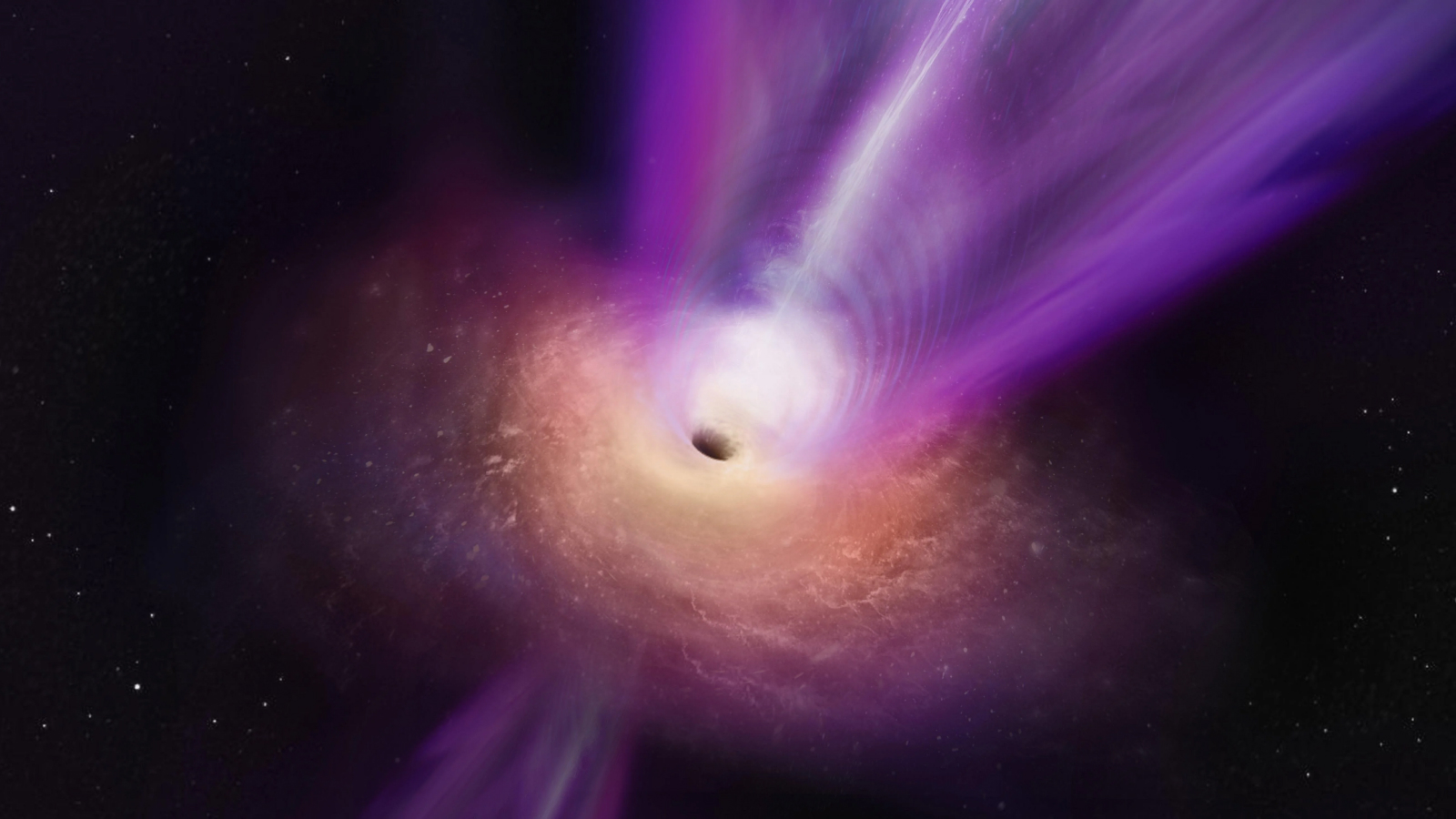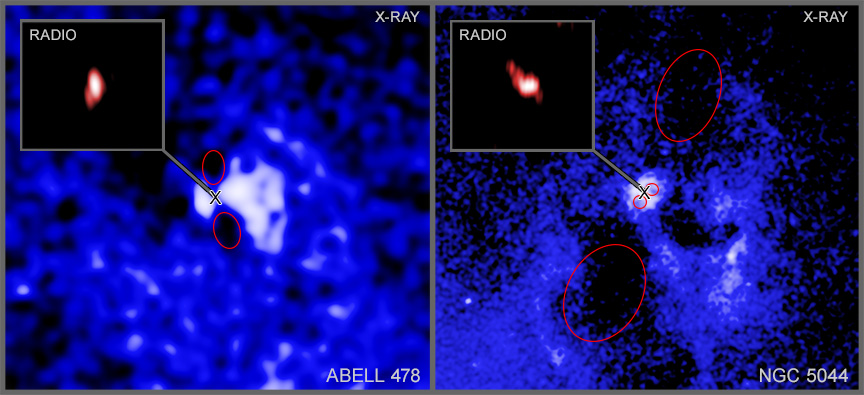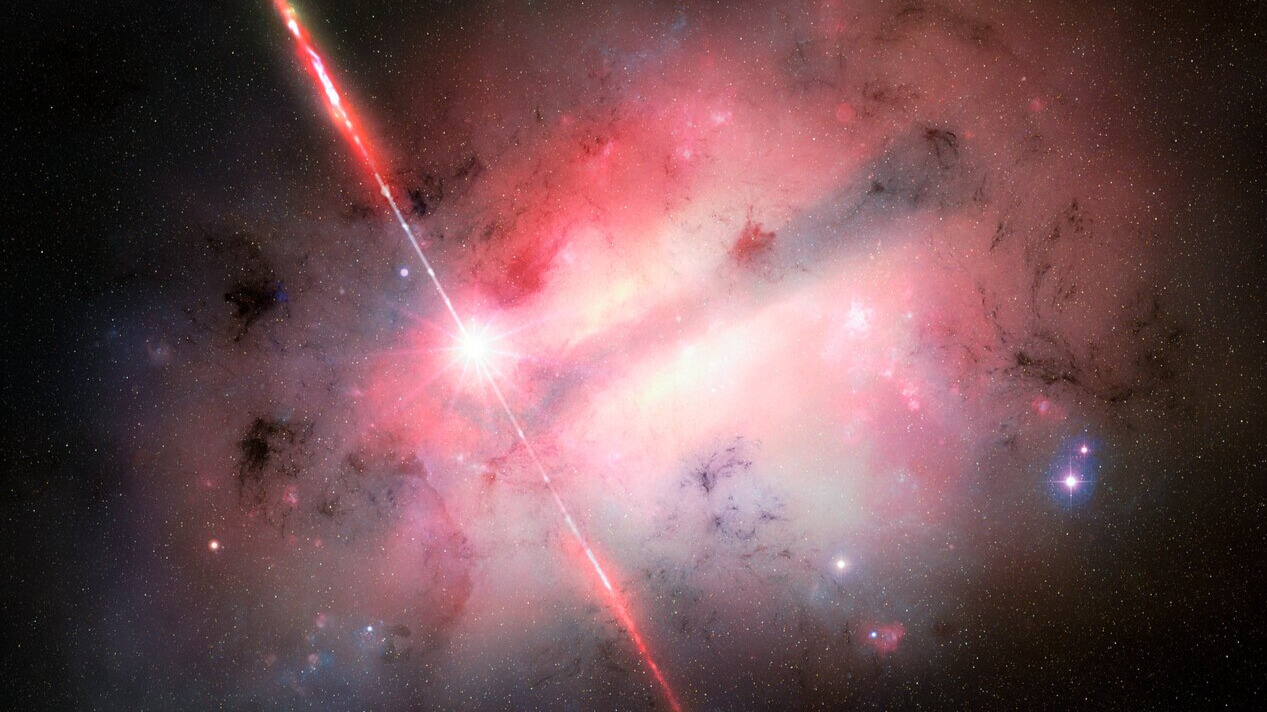NASA spots 16 'Death Star' black holes blasting powerful beams at multiple targets
Researchers using NASA's Chandra X-ray telescope have found that a group of "Death Star black holes are swiveling around and pointing at new targets, like the fictional space station in Star Wars."

Astronomers have witnessed vast black holes blasting powerful beams of particles into space, and then changing aim and firing at new celestial targets.
This cosmic firing range, which is reminiscent of the destruction of the planet Alderaan by the Death Star in Star Wars, could help scientists determine the impacts black holes have on their surrounding galaxies and beyond.
The team behind the observations studied 16 erupting supermassive black holes using NASA's orbiting Chandra X-ray Observatory and the Very Long Baseline Array (VLBA), a system of ten robotic radio telescopes that are operated remotely from Socorro, New Mexico. Doing so allowed the scientists to discover that jets of supermassive black holes can change directions by as much as almost 90 degrees.
"We found that about a third of the beams are now pointing in completely different directions than before," team leader Francesco Ubertosi of the University of Bologna said in a statement. "These Death Star black holes are swiveling around and pointing at new targets, like the fictional space station in Star Wars."
The team monitored the direction in which the supermassive black holes were aiming their jets of high-energy particles, which were blasted out at speeds approaching that of light as they reached distances of many light-years from their sources. They also used X-ray data from Chandra to examine two cavities or "bubbles" in interstellar gas that indicated the direction the jets were firing in millions of years ago. Comparing the two data sets allowed them to ascertain how the supermassive black holes had reoriented their jets.
This reorientation takes place over timescales as long as one million years to a few tens of millions of years. That may sound incredibly slow, but factoring in how long these cosmic titans have existed, it is relatively short.
Get the world’s most fascinating discoveries delivered straight to your inbox.
"Considering that these black holes are likely more than 10 billion years old, we consider a large change in direction over a few million years to be fast," team member and Center for Astrophysics Harvard & Smithsonian (CfA) scientists Gerrit Schellenberger said. "Changing the direction of the giant black hole beams in about a million years is analogous to changing the direction of a new battleship in a few minutes."
The jets like those the team behind this research focused on are created when supermassive black holes are surrounded by flattened clouds of matter called accretion disks. These platters of gas and dust gradually feed matter to the black hole, but not all the material in them meets this fate.
Powerful magnetic fields around supermassive black holes channel charged particles to the poles of the black holes, accelerating them to speeds that are a significant fraction of the speed of light. These particles are blasted out as twin jets in opposite directions from each of the poles.
When they impact hot gas in the galaxy surrounding them, the jets impart energy that prevents this gas from cooling down. Because stars are created when galactic gas cools and forms overdense clumps that collapse under their own gravity, this process can cut off star formation in areas of galaxies. If these beams sweep across galaxies as they change orientation, they increase the number of regions in which star formation can be stunted.
"These galaxies are too distant to tell if the beams from the Death Star black holes are damaging stars and their planets, but we are confident they are preventing many stars and planets from forming in the first place," team member and CfA researcher Ewan O'Sullivan said.
The researchers also considered the possibility that the supermassive black hole jets are not aligned with the cavities because gas is sloshing around in galactic clusters almost like wine in a glass being swirled in a circle. This sloshing of gas could arise from the collision of two galaxies in the cluster.
The team ruled out this idea, however, because this slushing is seen in clusters in which supermassive black hole jets are misaligned with cavities, and also in clusters in which there is an alignment between beam orientation and these vast gas bubbles.
One question the team hasn't been able to answer is how these supermassive black holes are able to reorient their jets in the first place. Supermassive black holes are spinning, and their beams should align with their rotational axis, the imaginary line that should also join the poles of the black hole.
As mentioned above, the material that feeds the black hole also provides matter for the jets. One possibility is that as the accretion disk spins around the black hole, matter falling to it at different angles that are not parallel to the disk could shift the black hole's rotational axis.
"It's possible that material rapidly falling towards the black holes at a different angle for long enough would drag their rotation axes in a different direction, causing the beams to point in a different direction," team member and CfA scientist Jan Vrtilek said.
The team's research is published in The Astrophysical Journal.
Originally posted on Space.com.
Robert Lea is a science journalist in the U.K. who specializes in science, space, physics, astronomy, astrophysics, cosmology, quantum mechanics and technology. Rob's articles have been published in Physics World, New Scientist, Astronomy Magazine, All About Space and ZME Science. He also writes about science communication for Elsevier and the European Journal of Physics. Rob holds a bachelor of science degree in physics and astronomy from the U.K.’s Open University





